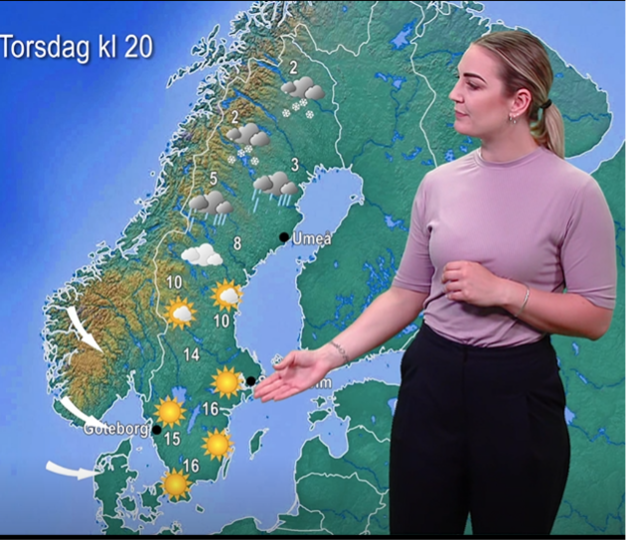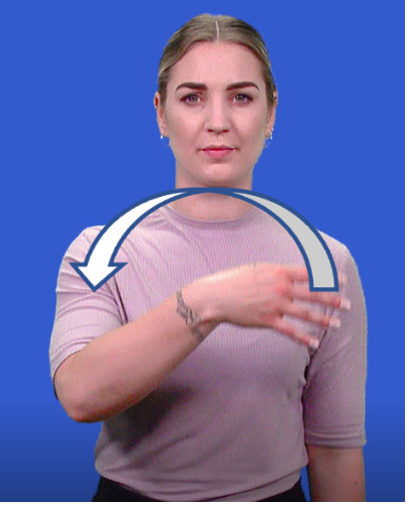 In this blog, the CEN’s Professor Chloë Marshall describes the findings of a recent project to investigate how easily hearing adults can learn sign language.
In this blog, the CEN’s Professor Chloë Marshall describes the findings of a recent project to investigate how easily hearing adults can learn sign language.
It is most people’s experience that learning a language is much harder in adulthood than it is in childhood, whether or not there is a critical or sensitive period for language-learning (Most learning happens in the first 3 years | Centre for Educational Neuroscience; Hartshorne et al., 2018). Research has shown that babies and young children possess powerful cognitive mechanisms for extracting statistical regularities from a stream of speech or sign language, and that these mechanisms allow them to ‘break into’ language by mapping word forms to meanings (Berent et al., 2021; Hay et al., 2011). But what about adults? Do they still retain these mechanisms? And if so, can they utilise them when confronted not only with a new language but a language in a modality that they have not previously encountered, namely a sign language?
What can hearing adults learn from viewing a few minutes of naturalistic sign language?
A project led by the CEN’s Chloë Marshall and funded by the Leverhulme Trust set out to investigate what hearing adults can learn from viewing just a few minutes of naturalistic sign language. She and her colleagues Dr Julia Hofweber, Prof. Marianne Gullberg, Lizzy Aumônier and Dr Vikki Janke adapted a paradigm used by Gullberg in previous work. Gullberg et al. (2010) had demonstrated that adult speakers of Dutch were able, after just a few minutes of watching a weather forecast presented in Mandarin Chinese, to learn something about word forms, word meanings, and sound regularities of this unfamiliar language.
Weather forecasts in Swedish Sign Language
Chloë and her team wanted to investigate whether English-speaking adults who had never learned any sign language would be able to learn similar linguistic information after short exposure to Swedish Sign Language (Svenskt teckenspråk, STS). They developed a four-minute weather forecast in STS, within which were embedded 22 ‘target’ signs that varied in occurrence frequency (they occurred either three or eight times in the forecast) and in iconicity (how closely the form of the sign resembled its meaning).
They also created three experimental tasks. In Task 1, participants were shown a mix of target signs and signs that they had not viewed in the forecast, and they had to respond ‘yes’ or ‘no’ when asked whether they had seen the signs before. In Task 2, participants were shown each target sign and had to write down what they thought it meant. In Task 3, participants were shown target signs and signs that could or could not be signs of STS, and they had to make a judgement as to whether they thought each sign was a real sign of the language or not. Participants viewed the weather forecast and then did just one of the three tasks. The task was a surprise for them – they were not warned beforehand that they would have to do it. In this way the researchers were testing implicit and unattended learning.

A still image from the Swedish Sign Language weather forecast
What the study found
Although participants found all three tasks challenging, the results from Task 1 (which assessed the recognition of sign forms) and Task 2 (which assessed whether participants could work out the meaning of the signs) indicated that they had managed to learn something. Participants were more accurate in recognising and assigning meaning to signs that occurred more frequently in the forecast and that were more iconic. Unlike in the original Mandarin Chinese study of Gullberg et al. (2010), however, participants did not appear to have learnt anything about what forms possible signs can take. Nevertheless, taken as a whole this exciting project has shown that the cognitive mechanisms that adults bring to ‘breaking into’ a new language are not limited to just speech, but can be employed even when the language modality is an unfamiliar one.

A still image from one of the target signs used in the experimental tasks, meaning ‘rainbow’. This is an example of a highly iconic sign, because it is visually very similar to a rainbow. Other target signs were less iconic. For example, the sign for ‘mountain’ involves the two fists rubbing past one another, which does not resemble the shape of a mountain at all. Sign-naïve adults found signs like ‘mountain’ harder to remember and guess the meaning of than highly iconic signs such as ‘rainbow’.
What are the implications?
Although the project was not designed to evaluate the effectiveness of sign language teaching, the findings have potential implications for education. The fact that both the form and the meaning of signs were better learnt when they occurred with higher frequency in the input is not surprising given what scientists already know about the role of frequency in language learning (Ellis, 2002), but it provides support for teachers manipulating the frequency of signs in their teaching materials and motivation for learners to seek repeated exposure to such materials. More innovatively, the findings also support the inclusion of signs that are high in iconicity because their meaning is more guessable.
An additional finding from the study, namely that participants’ scores on a range of cognitive tasks such as English vocabulary, executive functions and non-verbal reasoning did not correlate with their learning, suggests that at the early stages of sign language learning the characteristics of the learning materials might matter more for learning than students’ cognitive abilities.
More work needed on second language learning of sign
This set of studies needs replicating in different sign languages and with different input materials. Nevertheless, the findings make an important contribution to the field of the second language learning of sign, where much less is known compared to spoken language learning (Schӧnstrӧm & Marshall, 2022). One paper from the project has been published (Hofweber et al., 2022), another has been accepted for publication (Hofweber et al., 2023), and others are in process. Please contact Chloë if you would like further information (chloe.marshall@ucl.ac.uk).
REFERENCES
Berent, I., de la Cruz-Pavía, I., Brentari, D. & Gervain, J. (2021). Infants differentially extract rules from language. Scientific Reports, 11, 20001. https://doi.org/10.1038/s41598-021-99539-8
Ellis, N. (2002). Frequency effects in language processing: A review with implications for Theories of implicit and explicit language acquisition. Studies in Second Language Acquisition, 24(2), 143-188. https://doi.org/10.1017/S0272263102002024
Gullberg, M., Roberts, L., Dimroth, C., Veroude, K., & Indefrey, P. (2010). Adult language learning after minimal exposure to an unknown natural language. Language Learning, 60, 5-24. https://doi.org/10.1111/j.1467-9922.2010.00598.x
Hartshorne, J., Tenenbaum, J., & Pinker, S. (2018). A critical period for second language acquisition: Evidence from 2/3 million English speakers. Cognition, 177:263-277. https://doi.org/10.1016/j.cognition.2018.04.007
Hay, J. F., Pelucchi, B., Graf Estes, K., & Saffran, J. R. (2011). Linking sounds to meanings: Infant statistical learning in a natural language. Cognitive Psychology, 63, 93-106. https://doi.org/10.1016/j.cogpsych.2011.06.002
Hofweber, J. E., Aumônier, L., Janke, V., Gullberg, M., & Marshall, C. (2022). Breaking into language in a new modality: The role of input and individual differences in recognising signs. Frontiers in Psychology, 13:895880. https://doi.org/10.3389/fpsyg.2022.895880
Hofweber, J., Aumônier, L., Janke, V., Gullberg, M., & Marshall, C. R. (accepted). Which aspects of visual motivation aid the implicit learning of signs at first exposure? Language Learning.
Mott, M., Midgley, K., Holcomb, P., & Emmorey, K. (2020). Cross-modal translation priming and iconicity effects in deaf signers and hearing learners of American Sign Language. Bilingualism: Language and Cognition, 23, 1032-1044. doi:10.1017/S1366728919000889
Schӧnstrӧm, K., & Marshall, C.R. (2022). SLA2: Linking the domains of second language acquisition and sign language acquisition. Introduction to special issue ‘second language acquisition of sign languages’. Language, Interaction and Acquisition, 13, 145-158. https://doi.org/10.1075/lia.00014.eng
